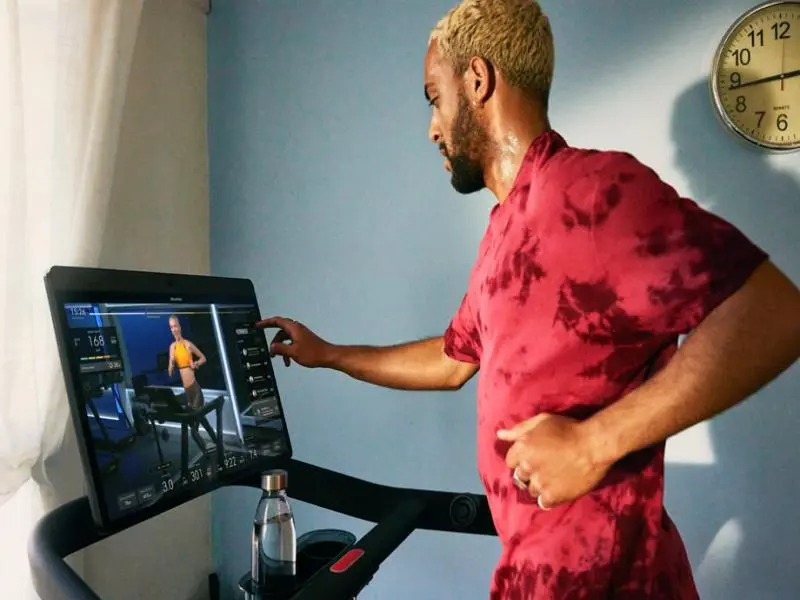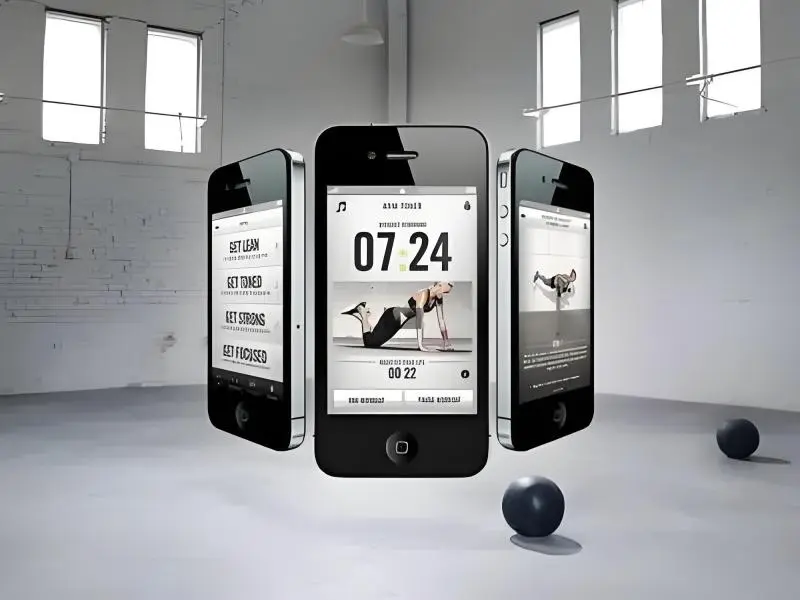- Augmented reality is a technology that superimposes computer-generated images and information onto the real world.
- AR technology allows trainers to provide virtual coaching and real-time feedback to their clients, making workouts more engaging and effective than ever before.
OUR TAKE
The fitness industry has witnessed a significant shift towards the use of technology to enhance the workout experience. One of the most cutting-edge technologies being utilised in fitness today is augmented reality. Augmented reality (AR) technology is transforming the fitness industry by providing virtual coaching and real-time feedback to clients. With its ability to enhance motivation, engagement, and performance, AR technology is revolutionising the way we work out and helping us achieve our fitness goals faster and more effectively than ever before.
–Rebecca Xu, BTW reporter
Virtual coaching and group workouts: Utilising AR technology in fitness
The journey from the days of heavy, mechanical gym equipment to the sophisticated, data-driven fitness gadgets we use today has been nothing short of revolutionary. Early fitness technology focused on providing simple feedback, such as counting repetitions or tracking distance. However, as technology advanced, so did the sophistication of these devices, with the introduction of heart rate monitors, calorie counters, and even smart scales that could provide detailed insights into a user’s health and fitness progress.
The next wave of innovation brought us smart wearables, which could sync with mobile apps to offer real-time data and personalised workout plans. These devices, often equipped with accelerometers, GPS, and even bio-sensors, became our personal trainers, coaches, and health advisers, all on our wrists or in our pockets.
Now, we find ourselves at the cusp of another technological leap with the advent of AR. This cutting-edge technology is poised to bridge the gap between the physical and digital worlds, offering an immersive experience that is both engaging and transformative.
Once a futuristic notion, AR is now a tangible reality that is beginning to reshape the fitness industry. By overlaying digital information onto the user’s real-world environment, AR provides a unique and interactive way to engage with fitness activities.
Also read: TXT’s VR concert: Seamlessly blending K-pop and virtual reality
Also read: How motion capture brings virtual idols to life
Augmented reality: The personal trainer in your pocket
Virtual coaching made accessible
One of the most significant benefits of AR in fitness is the virtual coaching it provides. Users can now have a personal trainer virtually present with them, guiding them through workouts, and correcting their form in real time. This personal touch, once only available to those who could afford in-person training, is now accessible to anyone with a smartphone and AR capabilities.
We’re not just a fitness company; we’re a technology company that happens to be in the fitness space.
John Foley, CEO of Peloton
As a renowned fitness equipment company, Peloton utilises AR technology to provide users with virtual coaching capabilities. John Foley, CEO of Peloton said, “We’re not just a fitness company; we’re a technology company that happens to be in the fitness space.” Through Peloton’s smart fitness devices and applications, users can receive real-time exercise guidance from the comfort of their homes. The virtual coach demonstrates various workout movements through the device’s screen, offering detailed explanations and feedback. Users can adjust their movements according to the virtual coach’s instructions, thereby effectively enhancing the effectiveness of their workouts.

Real-time feedback and form correction
AR technology offers real-time feedback on users’ form, ensuring they are performing exercises correctly. This instant feedback loop is a significant advantage over traditional workout videos or guides, which cannot provide immediate corrections. Correct form is crucial for effective workouts and injury prevention.
Kemtai is a fitness application that leverages AR technology to offer motion correction features to users. The app monitors users’ exercise movements in real-time through the device’s camera and compares them with standardised movements. The virtual coach provides immediate feedback based on the monitoring results, assisting users in adjusting their posture and form. This real-time correction functionality not only enhances the effectiveness of workouts but also reduces the risk of injury.

Zwift is a virtual fitness platform that incorporates AR technology to provide personalised training programs. Users can input their fitness goals and physical conditions into the platform, which generates a suitable training plan. The virtual coach adjusts the training program based on the user’s real-time data and offers personalised guidance. This personalised training plan helps users exercise more effectively, enhancing the scientific and targeted nature of their training.
Pop quiz
Which of the following is a benefit of using AR technology in fitness applications?
A. Increased cost of fitness equipment
B. Reduced motivation for users
C. Enhanced tracking and feedback
D. Limited accessibility for home workouts
The answer is at the bottom of this article.
Group workouts reimagined: The social aspect of fitness with AR
While individual workouts have seen significant advancements with AR, group fitness classes have also been reimagined. AR allows for virtual group classes, where participants can join from the comfort of their homes and still feel connected to their workout community. This social aspect is crucial for many individuals who find motivation in group settings.
One standout example is the “fill the shape” game, which has gained popularity on the Chinese version of TikTok. This interactive AR fitness effect challenges users to match poses displayed on their screens, scoring points based on their accuracy. It’s a fun and engaging way to blend choreography with technology, offering a new dimension to at-home workouts. The game’s success, with nearly 200,000 views shortly after its release, underscores the potential of AR to make fitness more accessible and enjoyable for a global audience.
I use this to help control my pain. It has helped me a lot, enough to keep me off stronger narcotics.
A user named Tina H
The use of AR in group fitness is not limited to social media challenges. Companies like FitXR are leveraging AR to create immersive workout experiences that feel like having a personal trainer in your living room. With a library of over 1000 on-demand classes, users can enjoy a variety of workouts, from boxing and HIIT to dance and sculpting sessions. The platform’s global community of over 20,000 fitness enthusiasts connects users, allowing them to share their progress and celebrate wins together. A user identifying themselves as Tina H left a review on Google Play, stating: “I use this to help control my pain. It has helped me a lot, enough to keep me off stronger narcotics. I love this!”
AR-enhanced group workouts can also incorporate interactive elements, such as virtual leaderboards and challenges, which encourage friendly competition and foster a sense of community. These features can make group workouts more engaging and fun, helping to keep participants motivated and committed to their fitness routines.
Nike Training Club is a fitness app that utilises AR technology to offer virtual challenges and competitive features. Users can participate in a variety of virtual challenges, compete with users around the world, or complete specific workout missions. This form of virtual competition not only enhances the users’ workout experience but also stimulates their competitive spirit and motivation to participate.

The future of AR in fitness: Challenges and opportunities
While the potential of AR in fitness is vast, there are challenges to overcome. Issues such as the cost of AR-compatible devices, the need for high-speed internet for seamless experiences, and the privacy concerns surrounding the use of personal data must be addressed. The industry is actively working on solutions to these challenges to ensure that AR technology can be widely adopted.
The future of AR in fitness is bright, with opportunities for innovation in areas such as immersive virtual reality workouts, personalised nutrition plans based on AR data, and even AR-assisted physical therapy. As technology continues to advance, the possibilities for enhancing the fitness experience through AR are limitless.
The integration of augmented reality into fitness is more than just a technological advancement; it’s a revolution in how we approach health and wellness. By providing virtual coaching, real-time feedback, and a new level of interactivity, AR is making fitness more accessible, engaging, and effective. As the technology continues to evolve, the future of fitness promises to be more connected, personalised, and immersive than ever before.
The correct answer to the pop quiz is C. Enhanced tracking and feedback.
